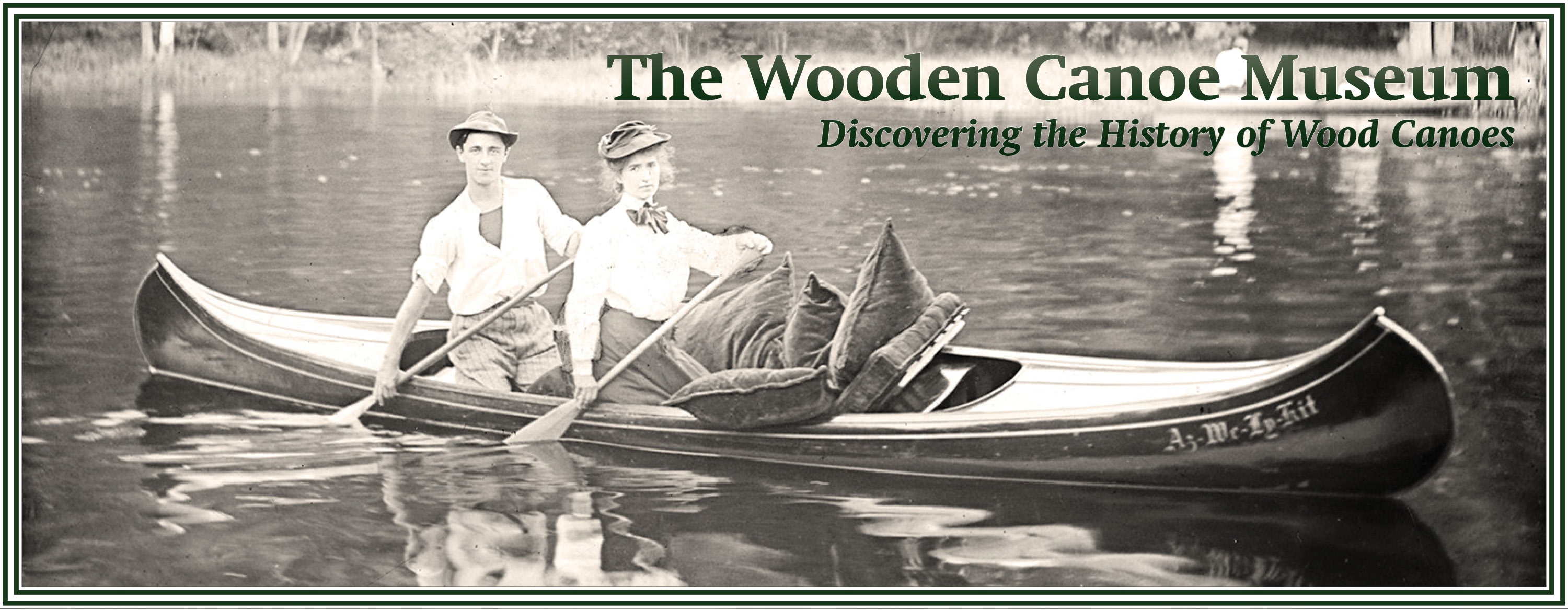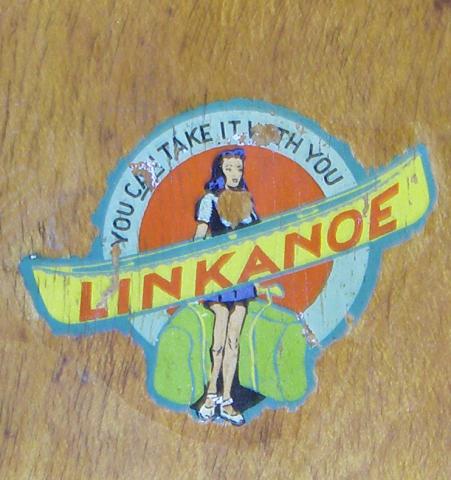At the end of World War 2, Ed Link was searching for a way to keep his factories going and his employees working. He was a pilot and the inventor of the flight trainer, with the homebase of Link Aviation Devices in Binghamton, NY. He owned a Grumman Widgeon floatplane and also enjoyed hunting and fishing. He had invented a sectional canoe that could be carried in the tail of his airplane so that after landing on a remote lake in Quebec, he could assemble the Linkanoe on the top of the wing, then paddle off to fish, or to a nearby cabin. So in 1945 he kept the branch factory at Gananoque, Ontario, busy by building these sectional canoes and square stern boats utilizing the same equipment and materials which had been used in building flight trainers.
The Linkanoe is composed of 10 sections that are clamped together to form a canoe shape, then a waterproof canvas ‘boot’ is stretched over the hull . The hull sections are constructed of laminated wood and micarta plastic sheet. The dark red-brown micarta is a thermosetting material made by impregnating a phenolic resin (like Bakelite) into a cloth (like linen). Once this is placed over a mold and heated, the shape is set and cannot be un-done with re-heating. A serial number was painted onto each section, in dark red, and is found on the exterior of the hull along the keel line, where four sections get clamped together. A set of from 1 to 5 stars was painted on the interior of the hull near the gunwale. These relate to how to stack the sections for optimum storage.
The Linkanoe was sold disassembled in two canvas bags, and included two sectional paddles.
A Linkanoe is assembled by laying out all 10 sections, with all the red star sections on one side, all the whites on the other. There is a number painted on the inside of the hull along the keel line: place all 4 ONEs adjacent to eachothher, etc. Then clamp the red/white bow section together, and continue until all 5 segments are lined up. Next, pull these segments together and clamp them. Position the center thwart into its spring-loaded bracket, and likewise, install the seats into their respective brackets, giving them a hand-slap to lock into place. Lastly, the two deck plates are slid as far forward into the points as possible, and the eyebolt in the center is rotated so that the tang on the bottom of the bolt securely locks into the underside of the gunwale.
The canvas ‘boot’ is held onto the hull by stretching rubber rope over aluminum ‘furls’ that are screwed into the gunwale. The original canvas boots were made by the Eureka Tent Co. of Binghamton, NY, and were olive drab in color.
Other sectional vessels made at Gananoque were the LinkSkiff, the same hull as a Linkanoe except fitted with a center seat and oarlocks, for rowing, a square stern Linkboat, and a 9 foot LinkTender, all made with the same materials. Other non-sectional lap-strake boats were built at the same factory.
Manufacture of these sectional boats lasted from 1946 to 1949. It is thought that about 4,000 in total were produced.
- McCloud, Tom and Bob Snyder. Ed Link and his Linkanoe. Wooden Canoe Issue 160, August 2010.

